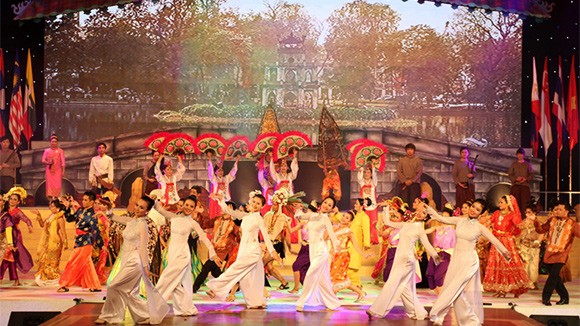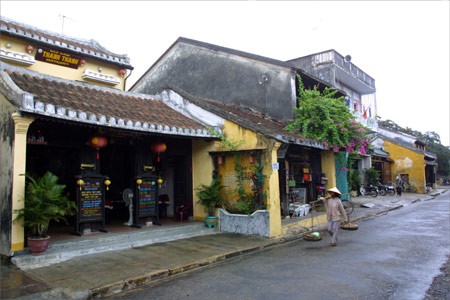(VOVworld) – Vietnam is reviewing the implementation of a Party resolution on “Building and developing the Vietnamese culture imbued with advancement and national identity”. Starting from 1998, the resolution implementation has helped Vietnam preserve its national distinctiveness and absorb quintessence of world culture.
 |
| A Vietnamese performance at the Quang Nam Heritage Festival in June 2013 |
Vietnamese culture managers have shared the view that after 15 years of implementation of the 5th plenum resolution of the 8th Party Central Committee, the awareness of culture’s role has been enhanced remarkably. Cultural resources, particularly human resources, have been uphold comprehensively. The culture sector has built a healthy lifestyle for the Vietnamese people with the motto: “Humans are both creative subjects and objectives of cultural development. Doctor Nguyen Chi Ben, Director of the Vietnam Institute of Culture and Arts, told VOV:“Over the past 15 years, culture and arts have contributed to nurturing personality of the Vietnamese people, looking towards truth, goodness, and aesthetics. At present, cultural products are diverse. The people have many opportunities to approach and enjoy cultural products everywhere: in the theater, live shows, CDs and videos. There is an increasing number of cultural producers: both state and private sectors, most notably in cinematography and publishing”.
In 15 years, an additional 15 cultural heritage items in Vietnam have been recognized by UNESCO, bringing the total number of Vietnam’s world heritage items to 17, the second most in Southeast Asia. Festivals have been booming, totaling 8,000 nationwide. The movement on uniting the people to build a healthy lifestyle is one of the milestones in implementing the Party resolution. There were more than 16 million cultural households in Vietnam in 2012 compared with 8 million households in 2000. The number of cultural villages and hamlets rose from 17,000 in 1998 to 58,000 last year. The revised Heritage Law has boosted cultural development and international integration. Many traditional art forms of the Vietnamese have escaped extinction: lullaby, Xam singing, and Central Highlands gongs. Nguyen The Hung, Head of the Cultural Heritage Department of the Ministry of Culture, Sports and Tourism, told VOV: “In the course of 15 years, we have examined 40,000 relics and classified nearly 3,200 national relics and 34 special national relics. To date, Vietnam has established 7 data banks on intangible cultural heritage in 7 localities nationwide. There are now 138 museums, including 17 private museums”.
 |
| Hoi An ancient town, a world heritage site |
Another remarkable achievement is the inauguration of many cultural and sports facilities, which number 70 at the provincial level, 540 at the district level and 4,500 at the ward level. People, including ethnic minority people, are now able to enjoy and participate in various types of culture and sports.
Nguyen Van Tinh, Head of the International Cooperation Department of the Ministry of Culture, Sports and Tourism, says Vietnam has seen its culture deeply integrating into the world: “Vietnam established cultural cooperative relations with 170 counties and signed 200 international agreements with other countries on cultural cooperation. 7 countries have had their cultural centers in Vietnam. Vietnam has cultural centers in France and Laos and will open 4 more centers abroad. Through cultural exchanges, the professional skills and qualification of the culture sector’s staff have improved.”
Vietnam with its 54 ethnic groups boasts an age-old traditional culture. The 5th plenum resolution of the 8th Party Central Committee defined the Vietnamese culture as rich, diverse, imbued with national identity and unified in diversity.